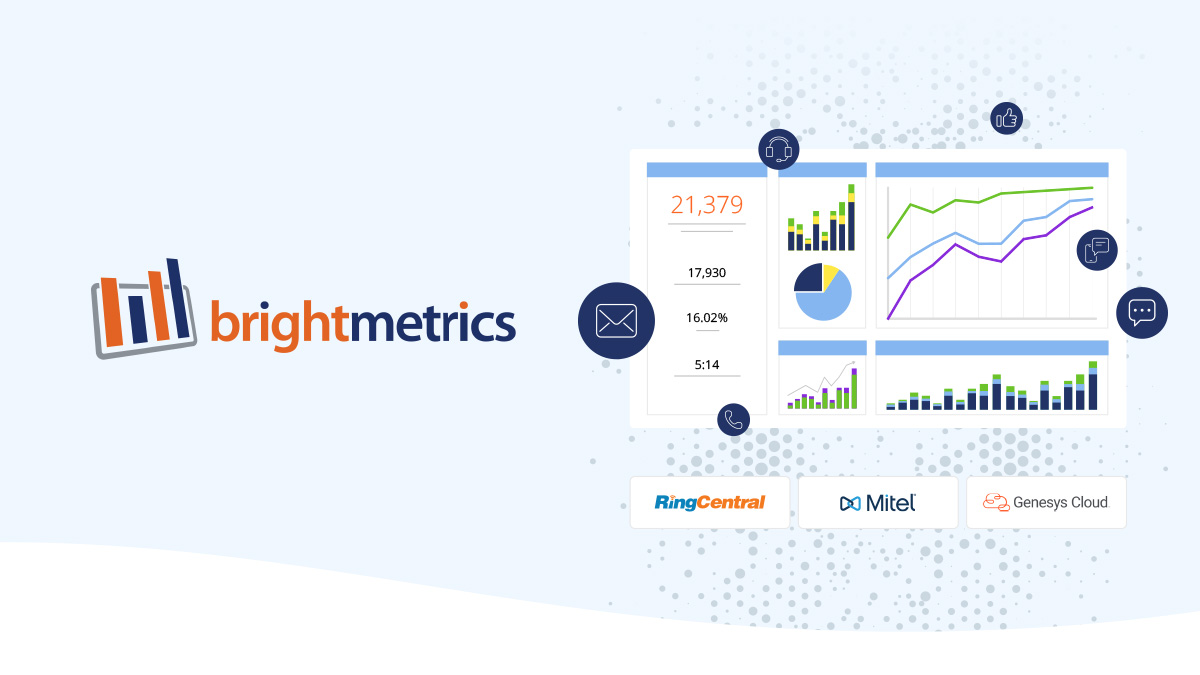For financial services, contact center efficiency is not just a goal—it’s a necessity. In fact, 64% of consumers would choose another financial institution after a poor call experience. If you fail to provide frictionless call experiences, it will cost you customers.
64% of consumers would choose another financial institution after a poor call experience. If you fail to provide frictionless call experiences, it will cost you customers.
Enhanced efficiency leads to increased revenues, elevated brand recognition, and, most importantly, improved customer satisfaction. With analytics, financial services possess a powerful catalyst for refining contact center performance, streamlining operations, and amplifying customer contentment. Below, explore the following strategies for maximizing efficiency in your financial services contact center.
The Power of Contact Center Analytics
Contact center analytics provide a comprehensive method to collect and analyze a broad spectrum of customer engagement data, revealing invaluable insights into contact center dynamics and customer and agent interactions.
This analysis covers essential metrics, such as call volumes, average handling time (AHT), abandonment rate, and customer satisfaction scores. These insights enable contact centers to identify trends, anticipate demands, and plan strategies to bolster efficiency and service quality.
5 Strategies for Maximizing Efficiency
1. Optimizing Performance with Key Metrics
Monitoring key KPIs like AHT and abandon rate are fundamental to improving contact center operations. AHT offers insights into the average duration taken to resolve calls, assisting in the optimization of call handling and the reduction of wait times.
Abandon rate measures the percentage of calls that are ended by the caller before reaching an agent. A high abandon rate often indicates long wait times or a lack of available agents, reflecting poorly on customer satisfaction and operational efficiency.
By closely monitoring key metrics, managers can identify areas needing improvement, such as staffing adjustments during peak hours or process optimizations to reduce wait times, enhancing the overall customer experience.
2. Tackling Bottlenecks With Analytics
Analytics help to identify and resolve operational bottlenecks. Analysis of call and other interaction data can unveil patterns leading to delays or issues, enabling informed decisions to enhance processes.
For instance, addressing high call abandonment rates might involve adjusting staffing levels during peak hours, whereas improving high transfer rates could necessitate focused agent training and coaching.
3. Empowering Customers and Streamlining Call Routing
Embracing an omnichannel approach reduces agent workloads by enabling customers to address their queries independently through AI-powered chatbots, comprehensive FAQs, and online account management tools.
Efficient call routing further ensures that incoming calls are directed to agents best equipped to handle specific inquiries, improving the first call resolution rates. Monitor your channels to see which ones your customers prefer. Then, continue investing in the opportunities that get the best results.
4. Leverage Data for Strategic Insights
Collecting and organizing data meticulously allows contact centers to keep a pulse on performance metrics and uncover areas ripe for improvement. Analytics tools like Brightmetrics, facilitate the aggregation of historical and real-time data on unified dashboards, simplifying the analysis and decision-making process. This organized data aids in scheduling, training, and enhancing customer experiences more effectively.
Having essential information organized on one dashboard makes it much easier to schedule enough agents for busy hours and seasons, identify opportunities for training, and find ways to improve customer experiences.
5. Encouraging Agent Performance and Adhering to SLAs
Providing agents with feedback on their performance encourages improvement without inducing stress. Real-time data displays help agents understand their performance in context, fostering a productive and competitive environment.
For contact centers operating under service level agreements (SLAs), it’s crucial to meet set standards, such as answering 80% of calls within 20 seconds, to avoid penalties and ensure contract compliance.
The Future of Contact Centers in Financial Services
The future of contact centers in financial services is set to be transformed by AI and machine learning, leading to predictive customer service models that proactively address customer needs. This evolution will enhance customer experiences and optimize resource allocation.
With the adoption of natural language processing, contact centers will achieve a deeper understanding of customer sentiments, enabling personalized interactions and smarter cross-selling strategies. Blockchain technology will enhance security and transparency, meeting the growing demand for faster, more secure services. These advancements will elevate contact centers from still being perceived as cost centers to revenue-generating departments, redefining excellence in the financial industry.
Embracing Analytics for Contact Center Success
Integrating analytics into contact center and call center operations transforms challenges into opportunities for growth and enhanced customer satisfaction. By leveraging the insights provided by analytics, financial services can not only refine their operational performance but also secure a competitive advantage in the bustling financial industry.
The journey towards enhancing contact center efficiency through analytics is both rewarding and essential for thriving in the dynamic landscape of financial services. Embrace the power of data, and let analytics guide you to unparalleled success and customer satisfaction.
Unlock the full potential of your contact center with Brightmetrics. Start your free trial today and gain access to insightful analytics that will help you streamline operations, enhance customer satisfaction, and drive revenue growth.




